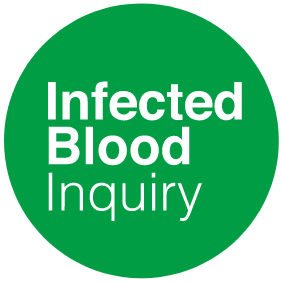Infected Blood Inquiry Chair finds that the scandal was “not an accident” – and its failures lie with “successive governments, the NHS, and blood services”.
The Chair identified a ‘cover-up’ he described as “subtle, more pervasive and more chilling in its implications.”
On 20th May 2024, we attended the publication hearing of the Final Report of the Infected Blood Inquiry alongside our clients.
The long-awaited Final Report found that from the 1970s, 30,000 people were “knowingly” infected with either HIV or Hepatitis C because “those in authority did not put patient safety first“.
Between 1970 and 1998, the NHS began using a new blood clotting treatment known as “Factor VIII”. This treatment worked by pooling together donor blood which would then be used to treat those with haemophilia and other blood conditions. The pooling of blood, however, meant that if even one of the donors was infected with a virus, the treatment would also be infected. Despite this, Factor VIII was imported from the US and contained blood from unscreened donors as well as prisoners who had a higher risk of carrying diseases. This led to those who received blood products and transfusions being infected, resulting in more than 30,000 people being diagnosed with either (or both) hepatitis C or HIV. More than 3,000 people have since died from their infections.
In his Report, the Inquiry Chair, Sir Brian Langstaff detailed the key findings:
- The NHS failed to ensure that potential donors were screened before donating. The Report found that, despite the risks of using prisoner blood from the US being well known, blood from prisons was still being used until 1984.
- Transfusions were given when they were not necessary. The Report suggests that healthcare staff assumed that the treatments did not pose a risk and thus transfusions were given even when not required.
- Research was conducted on patients without their knowledge or consent. It has transpired that many men, women and children who suffered from haemophilia were used for research by medical professionals. The Report also found that children in particular were used as ‘objects of research’ whilst attending a specialist boarding school. This research was carried out without consent and has led to only 30 of the 122 pupils who attended the school between 1970 and 1987 being alive today.
- Factor VIII was understood to be ‘less safe’ than treatments from the UK. The Report found that the NHS were aware of the risks in using Factor VIII as a treatment but fostered an ‘attitude of denial’ in providing the medication.
- The testing of blood that had been donated was not introduced as quickly as it should have been.
- The blood products used by the NHS were unsafe with the UK also failing to be self-sufficient in the blood products being provided.
- It was clear by 1982 that HIV could be transmitted by blood and blood products. Despite this, the Report found that the government failed in taking action to address the risk and ensure the safety of patients.
- Patients were tested for HIV and Hepatitis C without their knowledge and would not be told of results for a significant amount of time. This led to people being unaware that they carried any diseases of the blood which meant that urgent treatment was not carried out and that the infections were passed to their partners.
- When patients were eventually told about their diagnosis, they were done so in an insensitive manner.
- The NHS and Blood Services failed in supporting those who were dying due to being infected.
The Report also extensively considered the government response to the scandal. The Report describes the way in which the government and health officials acted during and after the time of infections as ‘downright deception.’ It is detailed in the report that NHS documents, government documents and patient medical records were deliberately destroyed as to ‘save face and expense.’ By February 1980, the Report confirms that the Departments for Health and Social Security were aware of the higher risk linked to the treatments, yet no action was taken. This was despite the fact that infectious disease experts had written to the Health Department calling for the import of blood form the US to be halted.
The Report concluded that the government response was ‘wholly inadequate’ and more should have been done to prevent further infections.
Sir Brian Langstaff made 12 recommendations on issues including the immediate payment of compensation to victims and their families, recognising and remembering what happened to people, training and educating healthcare professionals, preventing future harm to patients by enhancing the duty of candour, achieving a safety culture, improving regulation, promoting cultural change, regularly monitoring the livers of patients with hepatitis C, improving blood transfusion safety, finding and treating undiagnosed victims, and protecting the care of patients with haemophilia.
Watkins & Gunn acts for more than 300 individuals who have been infected or affected by infected blood. We also act for victim charities/ support organisations such as Haemophilia Wales, Haemophilia Northern Ireland, The Hepatitis B Positive Trust and CJD Support Network.
Lucy O’Brien, Director and solicitor acting for victims in Wales and Northern Ireland said;
“Our clients have described feeling both validated and vindicated by the Chair’s conclusions. Some have been campaigning and fighting tirelessly for compensation, accountability and justice for more than 40 years whilst the government denied wrongdoing and dismissed allegations of a cover up. We now call upon the UK government to engage fully with our clients and to urgently adopt and implement Sir Brian Langstaff’s recommendations.”
We will be holding meetings with our clients in June and July 2024 to discuss the Report and the Ministerial announcement of a compensation scheme for victims.
Lucy O’Brien and Nathan Little

